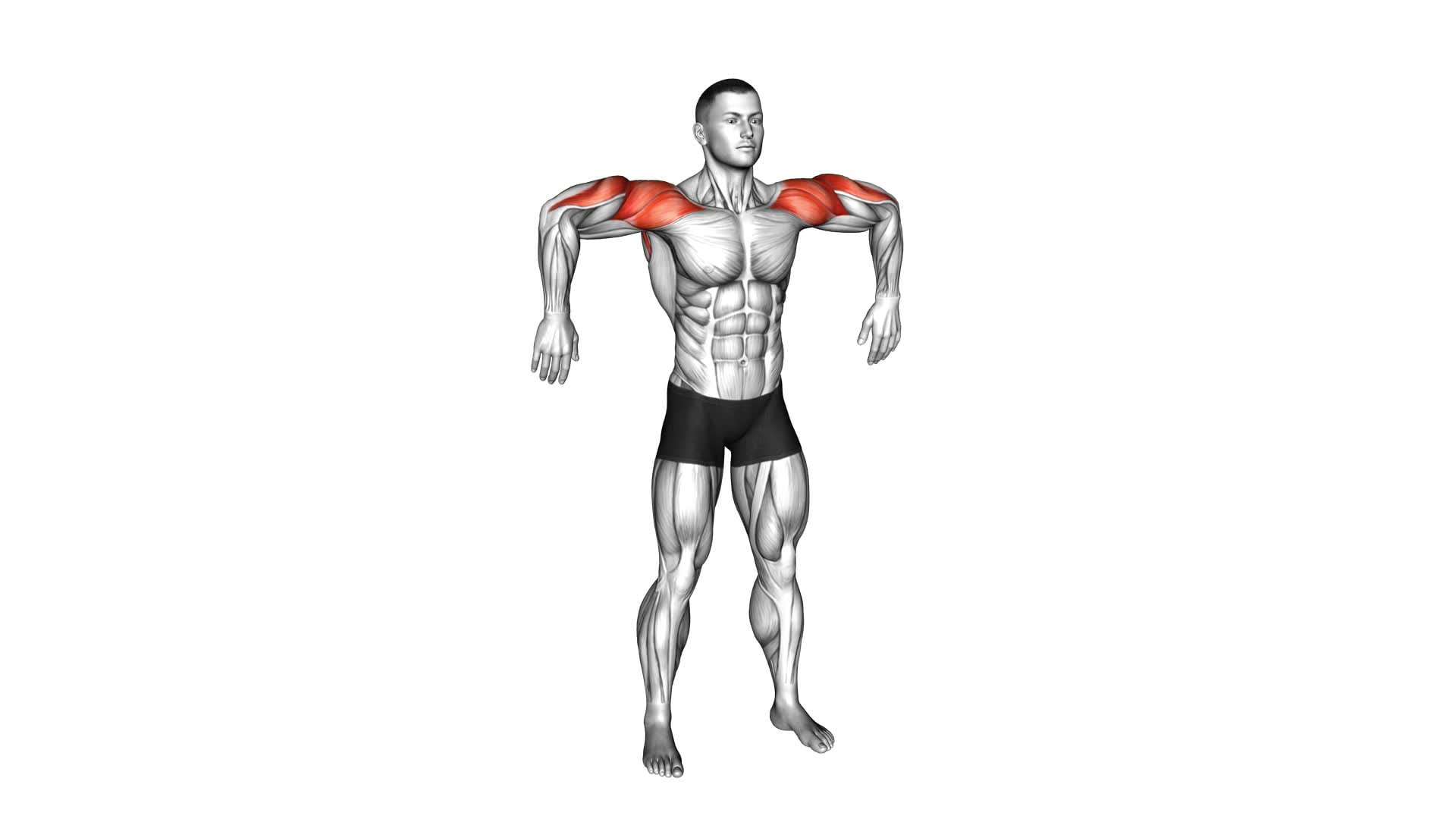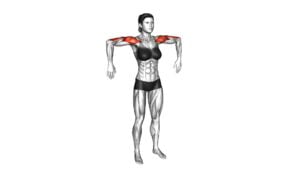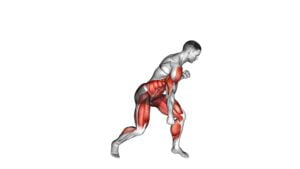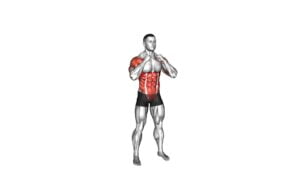Downward Punch (male) – Video Exercise Guide & Tips

Looking to master the downward punch? In this video exercise guide, we've got you covered.
Watch This Exercise Video
Get ready to target your chest, shoulders, and triceps with proper technique and added resistance using dumbbells. Avoid common mistakes and maximize your results with our expert tips.
And if you're looking to take your downward punch to the next level, we've got variations and progressions to challenge you.
Let's get started!
Key Takeaways
- Proper technique and form are essential for the downward punch, focusing on precision and avoiding excessive force.
- The downward punch targets the pectoralis major, deltoids, and triceps muscles, improving upper body power.
- Using dumbbells for added resistance enhances the challenge and effectiveness of the downward punch, activating stabilizer muscles and improving overall strength and muscle definition.
- Common mistakes to avoid include rounding the back, relying on momentum instead of core and upper body strength, improper breathing, and locking elbows or knees at the top of the movement.
Proper Technique: Mastering the Downward Punch
To master the downward punch, focus on perfecting your form and precision. Proper form is crucial to ensure maximum effectiveness and minimize the risk of injury. One common mistake is throwing the punch with too much force, sacrificing control and accuracy. Remember, power should come from the core and legs, not just the arm.
Another mistake is neglecting the position of your non-punching hand. Keep it up, guarding your face, to protect yourself and maintain balance.
When executing the downward punch, start with a strong stance, feet shoulder-width apart, knees slightly bent. Rotate your hips and shoulders as you extend your punching arm, aiming for the target with your knuckles. Maintain a straight wrist and keep your elbow slightly bent to prevent hyperextension.
As you retract your arm, bring it back to its original position swiftly, maintaining control. Practice proper form consistently to develop muscle memory and improve your technique.
With dedication and attention to detail, you'll soon master the downward punch.
Muscles Targeted: Chest, Shoulders, and Triceps
As you master the downward punch, it's important to understand that this exercise primarily targets the chest, shoulders, and triceps. Here are the key benefits of incorporating the downward punch into your workout routine:
- Strengthening the Chest: The downward punch engages the pectoralis major, the primary muscle in the chest. By performing this exercise, you can effectively build strength and definition in your chest muscles.
- Toning the Shoulders: As you execute the downward punch, your shoulder muscles, specifically the deltoids, are actively engaged. This helps to develop strong and well-defined shoulders.
- Building Tricep Strength: The downward punch also targets the triceps, the muscles located at the back of your upper arms. By regularly performing this exercise, you can strengthen and tone your triceps.
- Improving Upper Body Power: The downward punch requires a forceful movement, which helps to develop explosive power in your upper body. This can be beneficial for various activities that require upper body strength, such as throwing, punching, or pushing.
In addition to the downward punch, other exercises like push-ups and bench presses are also considered to be some of the best exercises for chest and triceps. By incorporating a variety of these exercises into your workout routine, you can maximize the benefits and achieve a well-rounded upper body workout.
Equipment Needed: Dumbbells for Added Resistance
To further enhance the benefits of the downward punch exercise, incorporate dumbbells as added resistance to increase the challenge and effectiveness of the workout. Dumbbell exercises are a great way to add variety and intensity to your resistance training routine. They provide a versatile and convenient alternative to traditional weightlifting machines or barbells.
By using dumbbells for the downward punch exercise, you can target and strengthen your chest, shoulders, and triceps even more effectively.
One of the advantages of using dumbbells is that they allow for a greater range of motion compared to machines. This means that you engage more muscles and develop better overall strength and stability. Additionally, dumbbells require more coordination and control, which activates your stabilizer muscles and helps improve your balance.
When selecting dumbbells for the downward punch exercise, choose a weight that challenges you but still allows for proper form and technique. Start with a lighter weight and gradually increase it as you become stronger and more comfortable with the exercise. Remember to always maintain proper posture and keep your core engaged to protect your back and maximize the benefits of the exercise.
Incorporating dumbbells into your downward punch routine is a fantastic way to take your workout to the next level. They provide a versatile and effective alternative for resistance training, helping you build strength, improve muscle definition, and enhance overall fitness. So grab those dumbbells and get ready to punch your way to a stronger, fitter you!
Common Mistakes to Avoid
To avoid common mistakes while performing the downward punch exercise, focus on maintaining proper form and technique. This won't only help you maximize the effectiveness of the exercise but also prevent potential injuries. Here are four common mistakes to avoid:
- Rounding your back: Proper form requires you to keep your back straight throughout the movement. Avoid rounding your back, as this puts excessive strain on your spine and can lead to back pain.
- Using too much momentum: A common mistake is relying on momentum to perform the downward punch. Instead, focus on using your core and upper body strength to control the movement. This will ensure you're targeting the right muscles and getting the most out of the exercise.
- Neglecting your breathing: Breathing is often overlooked, but it's crucial for maintaining proper form and avoiding injury. Remember to exhale as you punch downwards and inhale as you return to the starting position. This helps stabilize your core and maintain control throughout the exercise.
- Locking your joints: Another mistake is locking your elbows or knees at the top of the movement. This not only puts unnecessary stress on the joints but also reduces the effectiveness of the exercise. Instead, keep a slight bend in your elbows and knees to maintain tension in the muscles.
Tips for Maximizing Your Results
To maximize your results, incorporate these key tips into your downward punch exercise routine.
First, pay attention to your nutrition. Fueling your body with the right nutrients is essential for optimal performance and recovery. Make sure to consume a balanced diet that includes lean proteins, healthy fats, and complex carbohydrates. Additionally, stay hydrated by drinking plenty of water throughout the day.
Next, focus on your breathing techniques. Proper breathing can help you generate more power and maintain stability during the downward punch. Take deep breaths in through your nose and exhale forcefully through your mouth as you execute the punch. This will help you engage your core muscles and increase your overall strength.
Furthermore, listen to your body and give yourself adequate rest and recovery time. Overtraining can lead to injuries and hinder your progress. Incorporate rest days into your workout schedule and prioritize quality sleep to allow your muscles to repair and grow.
By following these nutrition tips and incorporating proper breathing techniques, you can maximize your results and achieve your fitness goals.
Now, let's explore variations and progressions: taking your downward punch to the next level.
Variations and Progressions: Taking Your Downward Punch to the Next Level
To take your downward punch to the next level, you can incorporate variations and progressions that will challenge your strength, power, and coordination. By introducing advanced techniques and incorporating your core muscles, you can maximize the effectiveness of this exercise.
Here are four variations and progressions that will help you take your downward punch to new heights:
- Plyometric Downward Punch: Add an explosive jump before each punch, engaging your fast-twitch muscle fibers and enhancing your power. This variation will increase your overall strength and explosiveness.
- Weighted Downward Punch: Hold a dumbbell or medicine ball in each hand while performing the downward punch. This added resistance will intensify the challenge on your muscles, further developing your strength.
- Single Leg Downward Punch: Perform the downward punch while balancing on one leg. This variation not only targets your upper body muscles but also improves your stability and balance.
- Speed Downward Punch: Increase the speed of the downward punch, focusing on quick and controlled movements. This progression enhances your coordination and reflexes while challenging your muscles to work faster.
Incorporating these variations and progressions will push your downward punch to new heights, challenging your body in different ways and helping you achieve better results. Remember to always maintain proper form and listen to your body's limits to avoid injury.
Frequently Asked Questions
Are There Any Modifications or Alternatives for People With Wrist or Shoulder Injuries?
If you have wrist or shoulder injuries, there are modifications and alternative exercises available. These modifications can help you still get a good workout without putting strain on your injured areas.
For wrist injuries, you can try using wrist wraps or doing exercises that don't involve putting pressure on your wrists.
For shoulder injuries, you can focus on exercises that target other muscle groups, such as your legs or core.
It's important to consult with a professional to find the best modifications for your specific injury.
How Many Sets and Repetitions Should Be Performed for Optimal Results?
To get optimal results from the downward punch exercise, it's important to consider the number of sets and repetitions. For beginners, starting with 2-3 sets of 10-12 reps is a good place to begin building strength and endurance.
As you progress, you can increase the number of sets and reps gradually. Remember to listen to your body and take breaks when needed.
This exercise can be a great addition to your workout routine for improving upper body strength and toning.
Can the Downward Punch Exercise Be Incorporated Into a Full-Body Workout Routine?
Yes, you can definitely incorporate the downward punch exercise into a full-body workout routine. The downward punch offers several benefits, including strengthening your upper body and core muscles, improving coordination, and burning calories.
It's a versatile exercise that can be modified for different fitness levels by adjusting the weight or resistance used. Adding this exercise to your routine will add variety and challenge, helping you achieve optimal results in your workouts.
Is It Necessary to Warm up Before Performing the Downward Punch Exercise?
Before performing the downward punch exercise, it's important to warm up properly.
Dynamic warm up exercises can help increase blood flow to your muscles, improve flexibility, and reduce the risk of injury.
Warming up prepares your body for the intensity of the exercise and helps you maintain proper form throughout.
Can This Exercise Help With Improving Punching Power and Technique in Combat Sports?
Improving your punching power and technique in combat sports is essential for success. The downward punch exercise can be a valuable tool to help you achieve these goals.
By incorporating this exercise into your training routine, you can develop stronger punches and refine your technique. It targets the muscles used in punching, allowing you to generate more power and execute proper technique.
Conclusion
In conclusion, mastering the downward punch exercise is essential for targeting the chest, shoulders, and triceps muscles. By using dumbbells for added resistance, you can take your workout to the next level and maximize your results.
Avoiding common mistakes and following the proper technique will ensure effective and safe training. By utilizing variations and progressions, you can continually challenge yourself and keep your workouts exciting.
So, grab your dumbbells and start punching your way to a stronger upper body!

Author
Years ago, the spark of my life’s passion ignited in my mind the moment I stepped into the local gym for the first time. The inaugural bead of perspiration, the initial endeavor, the very first surge of endorphins, and a sense of pride that washed over me post-workout marked the beginning of my deep-seated interest in strength sports, fitness, and sports nutrition. This very curiosity blossomed rapidly into a profound fascination, propelling me to earn a Master’s degree in Physical Education from the Academy of Physical Education in Krakow, followed by a Sports Manager diploma from the Jagiellonian University. My journey of growth led me to gain more specialized qualifications, such as being a certified personal trainer with a focus on sports dietetics, a lifeguard, and an instructor for wellness and corrective gymnastics. Theoretical knowledge paired seamlessly with practical experience, reinforcing my belief that the transformation of individuals under my guidance was also a reflection of my personal growth. This belief holds true even today. Each day, I strive to push the boundaries and explore new realms. These realms gently elevate me to greater heights. The unique combination of passion for my field and the continuous quest for growth fuels my drive to break new ground.







